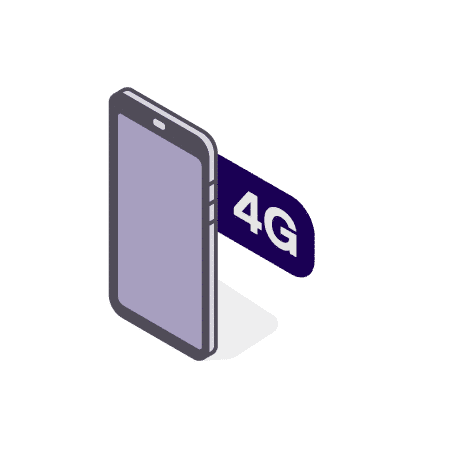Electromagnetic fields in the city
Finding out what sources are present in our towns and cities is essential if we want to take control of our own electromagnetic environment.
Electromagnetic fields in the city
The digital transition we are experiencing is at the heart of a societal debate that takes full account of the environmental impact of electromagnetic fields. The digital development of the territory and the infrastructures concerned must therefore be the subject of a management policy that takes environmental health into account. Although less present in our direct environment, energy transmission infrastructures are also part of the problem.
We encounter two main types of electromagnetic field in our territories: high frequency and low frequency. Although they result from the same phenomenon, they are subject to different regulations because their physical properties vary considerably depending on the frequency. Find out how these two types of electromagnetic field are used in our daily lives and the regulatory limits that regulate them.

Also known as radio frequencies, high frequencies are chosen for their ability to propagate efficiently in the atmosphere, which is very practical when transmitting signals over long distances.
At the beginning of the 20th century, the first radio transmissions saw the light of day, but they remained confidential. Radio electromagnetic fields were not yet part of the urban landscape at that time…
Today, technological developments have led to an explosion in the use we make of electromagnetic fields, enabling us to transmit huge quantities of data using devices that are accessible to everyone.
Local and regional authorities are therefore faced with the environmental health issues posed by the deployment of digital infrastructures.

Regulatory limit of 61 V/m
Wi-Fi terminal – It uses the 2400-2483.5 MHz and 5150 – 5350 MHz frequency bands.

Regulatory limit between 30 and 61 V/m
3G or 4G mobile phones – They use frequency bands ranging from 790 MHz to 2690 GHz.

Regulatory limit of 28 V/m
FM transmitters – They use the 87.5 – 108 MHz frequency band.

Regulatory limit between 30 and 36 V/m
DTT transmitters – They use the 470 – 694 MHz frequency band.
Unlike radio frequencies, low frequencies propagate very poorly through the air. They do, however, have the ability to carry large quantities of energy when propagated in electrical cables.
This is how RTE carries electricity from the power station to the village entrance and how ENEDIS distributes it from the village entrance to your home.
The infrastructures used in this way generate electromagnetic fields and are prompting the public authorities to make them part of the environmental health issue.
The question even arises for animals in rural areas where very high voltage lines cross farms.

Very high voltage lines
Authorised limit of 5000 V/m – 100 μT.

Transformers
Authorised limit of 5000 V/m – 100 μT.
To stay informed about electromagnetic fields in the city, enter your email address below
"*" indicates required fields
IN MY CITY
Latest news

EMF & HEALTH IN THE CITY
How do I know if I'm exposed to electromagnetic fields in my city?
In our towns and cities, we are constantly exposed to various sources of electromagnetic fields. Although mobile phone antennas are the main focus of attention, there are many other sources, such as public Wi-Fi hotspots, TV and radio stations emitting electromagnetic fields. As far as low frequencies are concerned, it’s mainly high-voltage power lines that need to be considered.
Our exposure depends on the density of these sources and how far away they are. The closer you are to them, the more likely you are to be exposed. However, these sources are necessary for the proper functioning of the mobile terminals we use every day. For example, it is advisable to make calls in areas with good coverage to limit exposure to your phone, which emits more electromagnetic field when the relay antenna is further away.
To find out your level of exposure, you can contact your local council to request a measurement via the French National Frequencies Agency (ANFR), and consult the results on cartoradio.fr. You can also check your exposure in real time on the EMF Observatory website.
To find out about your exposure in places open to the public, ask for an electromagnetic field measurement.
ELECTROMAGNETIC FIELDS
What does the law say?
In France, exposure limit levels are defined by the decree 2002-775. These values comply with the recommendation of the Council of the European Union 1999/519/EC, itself based on the guide drawn up by the International Commission on Non-Ionising Radiation Protection (ICNIRP) in 1998.
The French National Frequencies Agency (ANFR) plays a key role in monitoring and regulating exposure to electromagnetic fields. It manages the monitoring system, carries out measurements in the field, monitors radioelectric installations and publishes the results of these measurements.
It is important to note that French legislation is based on the recommendations of the National Agency for Food, Environmental and Occupational Health Safety (ANSES), which regularly assesses the effects of electromagnetic fields on health.


01
Since 2001
the French National Frequencies Agency (ANFR) has published a measurement protocol for
regulatory control of compliance with exposure limits.
02
In 2011
The government published a decree requiring electricity transmission infrastructures
a ten-year monitoring plan to ensure compliance with exposure limits.
03
In 2013
The French government published a decree setting up a system
for monitoring and measuring electromagnetic fields. As a result, monitoring measurements become free of charge for all French citizens in public places and homes.
04
Since 2015
The Abeille law on sobriety, transparency, information and
consultation in terms of exposure to electromagnetic fields was promulgated. In particular, it introduced compulsory prior information and publicity measures for the installation of relay antennas. It also strengthens the mechanisms for monitoring and controlling public exposure. It also led to the creation of a national dialogue committee and numerous measures designed to protect the most sensitive populations.
How can I be sure that a public location complies with the regulations?
Establishments open to the public are obliged to comply with the regulations in place regarding their electromagnetic field emissions. If they offer WiFi access, for example, they must indicate this clearly at the entrance of the areas concerned. To check that standards are being complied with, anyone can ask to have their exposure to electromagnetic fields measured in a place open to the public, using the ANFR system.




